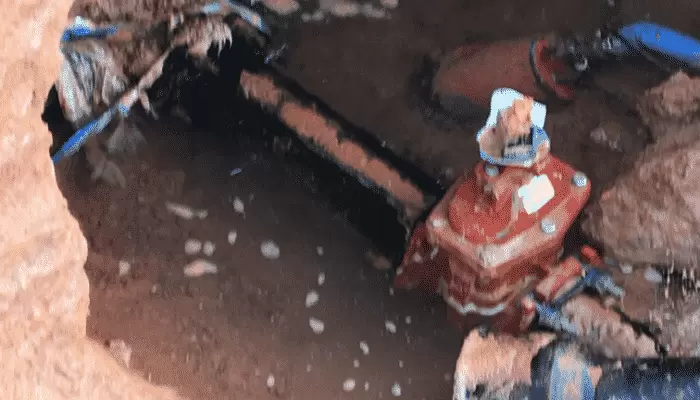Trust Hydrant Mechanics Of Clayton, NC, With All Your Valve Needs
At Hydrant Mechanics, we specialize in every aspect of fire hydrant maintenance, repair and replacement, including valve services. We repair, replace and inspect valves so that you are left with a working water system and peace of mind.

Valve Concerns
Your hydrant’s water valves should be routinely tested and maintained to ensure functionality and safety. Valve issues can still arise that should be addressed promptly. Some common valve issues that could pop up include:
- Hard To Access
- Rounded Nut
- Packing Leak
- Frozen Or Stuck
- In The Wrong Location
- Missing Or Damaged Parts
- Paved Over
- Rusted
Our field technicians are experts in locating, inspecting and repairing hydrant valves. We provide a full inspection report for your records after every service.
In addition, if we can isolate a short section of line, we can also cut in a valve where one did not exist before. Every valve that we install has either a PIV or valve box installed, giving access to the valve above ground and allowing you to turn it off when needed.
A fire hydrant can have various types of valves, such as:
- A full flow valve.
- A carlin valve.
- A hydrant assist valve.
These different types of valves are responsible for enabling and preventing water from flowing as well as to control the direction in which the water flows. To find out more about fire hydrant valves, call us today.
The flow rate of a fire hydrant can vary by fire hydrant, depending on the size of the fire hydrant, its purpose and the water main it is connected to. Flow rates typically range from 500 gallons per minute to 1,500 gallons per minute. Red fire hydrants usually have a flow rate of around 500 gallons per minute, whereas blue fire hydrants have a flow rate of around 1,500 gallons per minute. Based on the color of a fire hydrant, fire fighters will be able to determine how quickly they will be able to get water from an individual hydrant. To learn more about the flow rate of fire hydrants, contact us today.
A pressure of 20 pounds per square inch should be maintained for a fire hydrant. This level of pressure helps to ensure that the fire hydrant operates as it should when it is needed as well as helps to prevent contamination of the water supply due to any backflow issues. It is important to have your fire hydrant inspected and tested on a regular basis to ensure that it is working properly and has the correct amount of pressure. To get your fire hydrant inspected, give us a call today.
Hydrants should be examined once a year at the very least. Dry-barrel fire hydrants may need to be inspected twice a year, once in the spring and once in the fall.
Fire hydrants must always be operational and capable of providing appropriate fire protection, which necessitates regular maintenance and inspection. Repairs need to be planned in advance rather than reactively, and issues can be addressed before they become disastrous.
Every hydrant check should be documented, and any hydrant problems should be rectified as soon as possible.
Our Promise To Our Clients
Our clients are the most important part of our business. We strive to build client relationships and are dedicated to customer service. We do this in a few different ways:
- We provide 24/7 emergency service.
- We answer the phone when it rings so you have contact with us immediately.
- We respond within 24 hours to forms and contact the fire marshall after every repair to let them know your hydrant is fixed.
- We are licensed and insured, employing highly trained and certified technicians with decades of combined experience.
We have been in business for over 14 years and guarantee exceptional quality with any service we provide. Call our Clayton, NC, home office today at (919) 922-3829.
